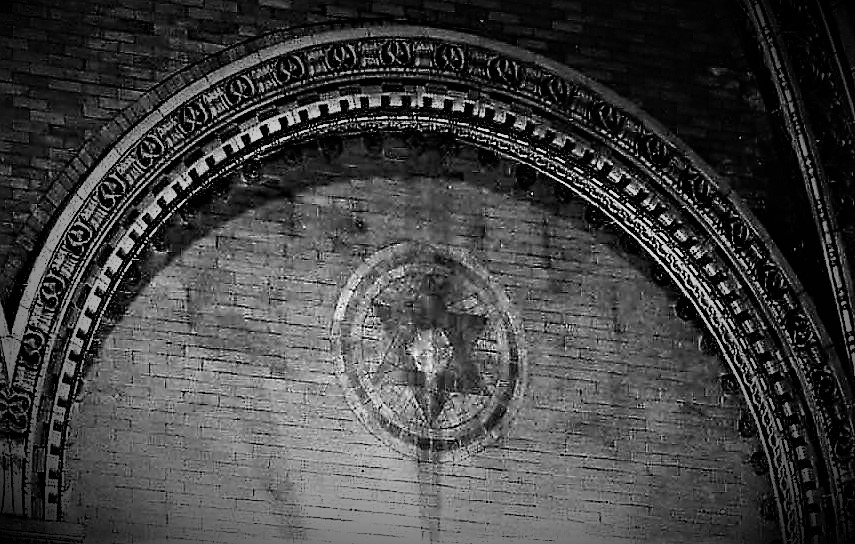
The side walls of Saint Francis de Sales church might seem restfully plain when the rest of the church is ornate, but it’s deceptive! Parish history is thickly layered beneath the surface.
When our church was built, the side walls showed the same bricks that you see today on the walls of the Sanctuary. Early pictures reveal mosaic medallions — a star in an eternal circle, and a Trinity triangle — decorating each of the six arches. Eight-pointed Nativity stars adorned the middle arches; and the side arches appear to have featured six-pointed stars representing the six days of creation and the House of David — earthly lineage of Jesus.
In the 1920s, each triangle had a large round lightbulb at its centre, and a row of lightbulbs lined each arch. That changed in 1940, when Bishop Lamb replaced the exuberant celebration of electricity with more elegant and “practical” metal sconces, fastened to cross-shaped brackets in the mosaic triangles, their shaded lamps dangling from metal chains.
The church decor was slightly altered in the 1950s by Bishop McShea, then heavily renovated for the Parish 1965 Diamond Anniversary under Monsignor Sefton. A story says that Monsignor Sefton came home from a trip to Europe, inspired by the cool blue lighting of Mediterranean churches, and wished to replicate the effect with blue walls. His chosen shade of tile was very fashionable in the 1960s and prevailing tastes were for streamlined modern decor. Diocesan-approved changes at that time included new pews; new flooring; and an electrical update to remove wall lamps (leaving wall holes?) and replace ceiling lamps with chandeliers. Unapproved tile walls quietly slid in, with two casual notations: “The price listed for the terrazzo floor also includes setting tile in six arches of the church” and “Belfi Brothers. This amount also includes setting tile in 6 arches of church.”
Skip forward to the 1990s, when the “blue bathroom tiles” began to fall off the walls, revealing the patchy tile-prepped surface underneath. Father Janton remarked that the bald patch looked like the African continent drawn on an ancient map. When it expanded to resemble Pangaea, it was time to do something. The mustard-coloured resurfacing was a simple, attractive solution (look above the sacristy doorway for the remaining blue tiles)
The walls of our church are layered with stories. Symbols changed their meaning over time. Technologies advanced. A richly ceremonial era gave way to the sleek modernism of the 1960s and early Vatican II. Hard times improved. And today we should find meaning in graceful continuity.
One thought on “Stuccoed Stars”